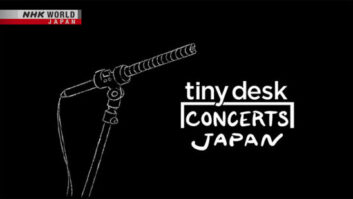
Fig. 1: The bizarre relay widgets just keep on coming. Seeing the picture of that relay in the Nov. 5 Workbench brought a chuckle to Steve Vanni of Technet Systems Group (www.technetsystems.com).
The photo reminded Steve of something he once found while inspecting a transmitter site for a prospective purchaser.
You can see Steve’s “find” in Fig. 1. The photo does ours one better; this was plugged into a live outlet, with the relay cover missing as well.
“Seeing this, it’s hard to figure out what the installer was thinking,” Steve writes. He was glad he didn’t fumble around in the dark that day feeling for a light switch.
By the way, Steve’s prospective buyer never did close the deal. Readers can imagine why.
* * *
Here’s a word of caution regarding all these relays from Nick Markowitz.
Nick is a part-time fire investigator as well as a broadcast engineer. Nick notes some real-world concerns when it comes to tinkering.
In yesterday’s world, tinkering was a perfectly acceptable way of solving problems. But as we have gone from carefree days to a world of rules and regulations — and litigation — the tinkerer’s days may well be at an end.
The AC loss relay is a perfect example. First off, Nick says, it is a violation of the National Electrical Codes to have open 120V voltages on a relay like this. It is required to be mounted within a grounded metal enclosure.
Just putting it inside a rack or cabinet does not cut it, and if OSHA would happen to walk in and find it, which has been known to happen, well, better get out your wallet.
Worse yet, should there be a fire in the studio and an investigator find something like this, you are just giving an insurance company an excuse not to pay or deduct payment from a claim.
The same is true when, in the good old days, a switch went bad on a piece of equipment. We just drilled a hole, mounted a new switch and bypassed the old one. Not anymore. If this equipment has a UL label, you just violated it. Again, you are giving OSHA and a fire investigator carte blanche in coming after you.
There’s nothing wrong with tinkering, Nick continues, but we must use common sense when it comes to how we do it — and make sure we are not violating codes or regulations. To do otherwise, we leave our stations open for legal complications.
In bad economic times, insurance companies are looking at every way possible to not pay claims. “Tinker on we must,” but we must also follow safety rules or end up spending our time defending our actions.

Fig. 2: Wall-mounted air conditioners are an excellent cooling choice for rack rooms. To be fair, most readers understand that kludges like the power failure relay shown in the November column are just that and not an example of good engineering practice. As many have pointed out to me, this kind of circuit is useful but best mounted on a panel, with a fuse and line cord.
However, it’s a sad commentary that many readers like Steve Vanni and our engineer who removed the power failure relay have come across such contraptions in the first place.
* * *
Office buildings can pose lots of problems for a broadcast facility. Perhaps one of the biggest issues is cooling.
Not every building is wired for 24/7 air conditioning — and if it is, the management firm may want a fortune to provide conditioned air after standard business hours.
If you’re looking for new studio space, this is an important consideration. At one station, the building management put a charge in the lease: $150 per hour for every supplemental wall unit used after 6 p.m. Should someone leave the A/C unit on in a studio, get ready to pay.

Fig. 3: Wooden floors permit easy movement of the talent’s ‘air chair.’ Separate rooftop units can be installed to handle the studios, but these compact units are ideal for rack rooms, as seen in Fig. 2. That’s what Dirk Nadon of the Nassau Broadcasting New Hampshire cluster chose for his rack room. Mounted high on the wall, the unit is out of the way but dumps cool air to keep the room comfortable, and the equipment happy.
* * *
Fig. 3 is another novel approach to solving a common studio problem. How many studios have you seen where an “air chair” has worn ruts in the studio carpet? I’ve seen plenty. Not only does the torn carpet look terrible, but eventually, the rutted threadbare carpet will pose a safety concern.
Yes, you can place one of those plastic office chair mats on the carpet and replace it every few weeks when it cracks under 24/7 use. The alternative is to carpet the room; but use a wooden laminate floor or tile under the console area. The smooth surface makes for easy chair movement and it will take awhile for ruts to form.
John Bisset has worked as a chief engineer and contract engineer for 40 years. He recently joined Nautel as regional sales manager for Europe and Southern Africa. He was SBE’s Educator of the Year in 2006. Reach him at[email protected]. Faxed submissions can be sent to (603) 472-4944.
Submissions for this column are encouraged and qualify for SBE recertification credit.












